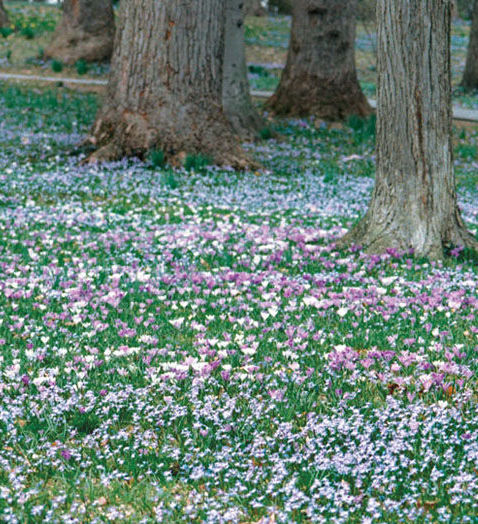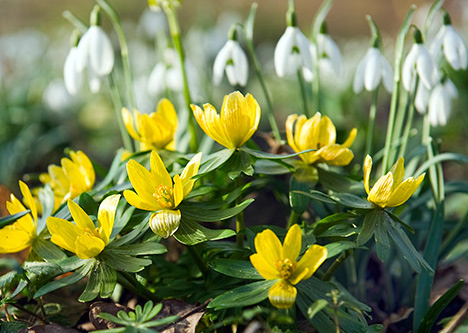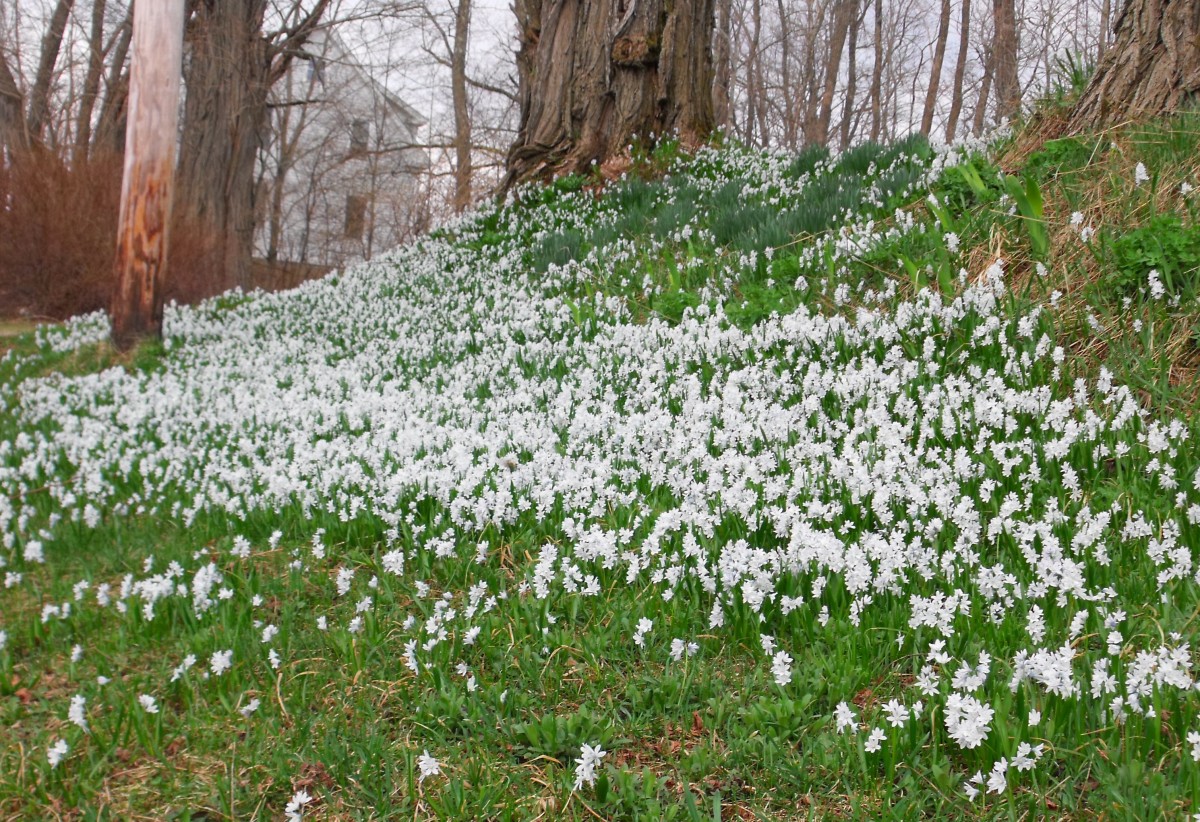Stinzenplanten
Naturalizing With Bulbs

A Stinze-style planting is a lawn underplanted with naturalizing flower bulbs for a delightful carpet of early spring blooms. Also known as stinzenplanten, this Dutch tradition can be adapted to yards and gardens here in the northeast U.S. It is quite possible that you’ve seen examples of stinzenplanten where plants like crocus, snowdrops, grape hyacinth or other small blooming plants have spread and naturalized over time. You can create this intentionally.
The best sites for Stinze-style plantings are beneath deciduous trees or at the forest’s edge where the grass is a bit sparse from shade. Dappled summer light is ideal. My own stinzenplanten is along the edge of my driveway where a forest of sugar maple and white ash meets the lawn. The bulbs bloom in March, April and early May, before the trees leaf out.
For the stinzenplanten to thrive, you shouldn’t mow the area until the flowers and foliage have died back naturally, about five weeks after blooming. The bulbs must complete their life cycles and photosynthesize enough to store energy for the next year’s blooms. No-mow May (and maybe June)!
The best bulbs for a Stinze-style planting are those that naturalize and multiply by underground bulblets. Some varieties may also self-seed over time. Once your plants are established, you can divide and replant them to expand your stinzenplanten. Most types of bulbs recommended for stinzenplanten are small and can be planted about 3–4" apart.
| Square footage of area to be planted | Number of bulbs needed with 3" spacing |
|---|---|
| 50 | 800 |
| 100 | 1600 |
| 200 | 3200 |
| 300 | 4800 |
Here are some recommended species commonly used in Stinze-style plantings
Very Early Spring:

- Species Crocus mix: A mix of types and colors blooming in very early spring, mostly Snow Crocus with some of the other small, low-growing species as well. 2–4" tall. Z3–8.
- Ruby Giant: Deep purplish red slender flowers with a lighter base and margins. Doesn’t compete well in grass, but easily reseeds itself and forms colonies in gardens. 3–4" tall. Z3–8.
- Dorothy Crocus Crocus: Bright deep orange-yellow inside with a light feathering of bronze on the base outside. Z3–8.
- Jumbo Crocus mix: Yellow, white, purple, blue and stripes, for large-scale naturalizing or border plantings, 4–6" tall. Z3–8.
- Garden Snowdrop: Frosty white 3-petaled bells with a touch of emerald green on the shorter inner segments. Often one of the first signs of life emerging from the melting snow, 4–6" tall. Z3–8.
- Double Snowdrop : Fully doubled frosty white 3-petaled bells with a touch of emerald green. Hardy and long-lasting, standing up to late snows, frosts and spring winds, 3–4" tall. Z3–8.
- Winter Aconite: Bright buttercup-yellow flowers in very early spring, each with a frilly green collar which opens bronzy, 2–4" tall. Z5–7.
- Harmony’ Dwarf Iris: Velvety royal purple-blue falls with a yellow crest, and lavender-blue standards. Fragrant and long-lasting, 4–6" tall. Z4–9.
Early Spring:
- Glory-of-the-Snow mix: Starlike flowers with soft medium blue petals and white centers. Can spread to create a stunning blue carpet for over two weeks in spring. 4–8" tall. Z3–8.
- Striped Squill: White to pale blue flowers, each petal striped with darker blue. Very hardy and easy to naturalize. 4–6" tall. Z3–8.
- Siberian Squill: Loose clusters of bright flax-blue pendent bells. Lightly scented. Very long bloom time! 6–8" tall. Z2–8.
Mid to Late Spring
- Gravetye Giant Summer Snowflake: Pure white bells with scalloped edges and green spots resemble snowdrops or giant lilies-of-the-valley. Faintly violet-scented. 18–36" tall. Z4–9.
- English Bluebell: Flax-blue flowers, sweetly scented. The flower of the mythic “bluebell woods” of western Europe and England. 12–18" tall. Z5–8.
- Grape Hyacinth: Distinctive spikes of bright cobalt blue florets with subtle white rims. Fragrant. Good for cutting. 6–8" tall. Z4–9.
- Grape Hyacinth ‘Valerie Finnis’: Racemes of pearly sky-blue fat florets naturalize well, slowly spreading their most unusual color. 6–8" tall. Z4–8.
- Guinea-Hen Flower: Checkered flowers in a mix of colors, mostly plum or bronze, with some lilac-pink or white. Will thrive in a well-drained sheltered spot; also suitable in grassy or humusy areas. 10–14" tall. Z3–8.

